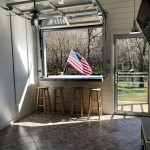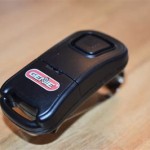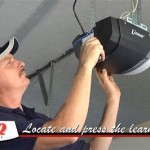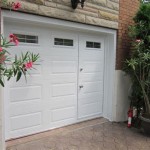How To Protect Your Car From Hail
Hailstorms can inflict significant damage on vehicles, resulting in costly repairs. Protecting a car from hail requires proactive measures and an understanding of available preventative strategies. This article outlines various methods and considerations for safeguarding a vehicle from hail damage when garage storage is not an option.
Utilizing Car Covers Specifically Designed for Hail Protection
One of the most direct and effective methods for protecting a car from hail is the use of a specialized car cover. These covers differ significantly from standard car covers designed primarily for dust and UV protection. Hail protection car covers are constructed from thicker, more durable materials, often incorporating multiple layers of padding or impact-resistant materials such as neoprene or reinforced foam. The thickness and density of these materials are crucial in absorbing the impact of hailstones, preventing dents and scratches on the vehicle's body panels. When selecting a car cover, it is essential to consider the size and shape of the vehicle to ensure a snug and secure fit. A properly fitted cover will minimize movement during a hailstorm, reducing the potential for the cover itself to cause scratches or abrasions. Furthermore, features such as elasticized hems, tie-down straps, and buckle systems can help to secure the cover in place, preventing it from being blown off by strong winds that often accompany hailstorms. Some high-end hail protection covers even include inflatable air cushions that provide an additional layer of impact absorption.
Choosing the right car cover requires careful consideration of the local climate and the typical size of hailstones experienced in the area. In regions prone to large hailstones, a thicker, more heavily padded cover is necessary to provide adequate protection. Conversely, in areas where hailstones are typically smaller, a lighter-weight cover may suffice. It is also important to consider the cover's breathability. A breathable cover will allow moisture to escape, preventing the buildup of condensation underneath the cover, which can lead to rust and corrosion. Regular inspection and maintenance of the car cover are also essential. Check for tears, rips, or other damage that could compromise its protective capabilities. Clean the cover regularly to remove dirt and debris that could scratch the vehicle's paint. When storing the cover, ensure it is completely dry to prevent mold and mildew growth.
Seeking Shelter in Temporary Structures and Underpasses
When a hailstorm is imminent, seeking temporary shelter for the vehicle can significantly reduce the risk of damage. Underpasses, bridges, and covered parking areas offer immediate protection from falling hailstones. However, it is crucial to assess the safety and legality of parking in these areas before doing so. Parking under a bridge or underpass may be prohibited in certain locations, and it is essential to comply with local traffic regulations to avoid fines or other penalties. Moreover, ensure that the chosen shelter provides adequate protection from all angles. Hail can be driven by strong winds, potentially impacting the vehicle from the sides or even underneath if the shelter is not fully enclosed. In situations where a hailstorm develops suddenly, and no official shelter is readily available, consider seeking refuge in parking garages attached to shopping centers or office buildings. These structures typically offer some degree of protection from hail, although the level of protection may vary depending on the design and construction of the garage.
In some regions, temporary carports or portable garages can be erected quickly to provide temporary shelter during a hailstorm. These structures are typically made of lightweight materials such as metal or fabric and can be easily assembled and disassembled. While they may not offer the same level of protection as a permanent garage, they can significantly reduce the risk of hail damage. When using a temporary carport or portable garage, ensure that it is securely anchored to the ground to prevent it from being blown away by strong winds. Also, consider the potential for water runoff. Position the structure in a way that minimizes the risk of water pooling around the vehicle, which could lead to flooding or water damage. It is important to note that while seeking temporary shelter can be an effective strategy, it is not always feasible or practical. In some cases, the hailstorm may develop too quickly, or suitable shelter may not be readily available in the immediate vicinity. Therefore, it is essential to have a comprehensive hail protection plan that includes multiple strategies.
Implementing Improvised Protective Measures in Emergency Situations
In situations where a hailstorm strikes unexpectedly, and no car cover or shelter is available, improvised protective measures can help to mitigate potential damage. Blankets, quilts, and even thick towels can be placed over the vehicle's vulnerable areas, such as the hood, roof, and windshield, to absorb the impact of hailstones. Secure these improvised covers with duct tape, rope, or bungee cords to prevent them from being blown away by the wind. While improvised covers may not provide the same level of protection as a specialized car cover, they can still significantly reduce the severity of hail damage. It is important to use thick, dense materials that can effectively absorb the impact of hailstones. Thin sheets or lightweight fabrics are unlikely to provide adequate protection. Consider using multiple layers of material to increase the level of impact absorption. When securing the improvised covers, ensure that they are tightly stretched and evenly distributed across the vehicle's surface. Loose or unevenly distributed covers are more likely to be blown away by the wind or to cause scratches on the vehicle's paint.
Another improvised technique involves parking the vehicle in a location that offers some degree of natural protection from hail. Parking near a building or a large tree can shield the vehicle from falling hailstones, although it is essential to consider the potential risks associated with this approach. Parking too close to a building could result in the vehicle being struck by falling debris, such as bricks or tiles. Similarly, parking under a tree could expose the vehicle to falling branches or other debris. Therefore, it is important to carefully assess the surroundings before choosing a parking location. If parking near a tree, choose a healthy tree with strong branches and avoid parking directly underneath any dead or weak branches. Also, be aware of the potential for sap or bird droppings to damage the vehicle's paint. In general, improvised protective measures should be considered as a temporary solution to minimize damage until more permanent protection can be arranged. It is important to inspect the vehicle thoroughly after the hailstorm to assess the extent of any damage and to take appropriate action to repair it.
Beyond physical protection, being informed about weather patterns is crucial. Subscribe to weather alerts and use weather apps that provide real-time updates and warnings about impending hailstorms. This allows ample time to prepare the vehicle and implement protective measures.
Proper car insurance is an essential element of hail damage protection. Comprehensive coverage typically covers hail damage, but it is important to understand the terms and conditions of the policy, including deductibles and claim procedures. Regularly review the insurance policy to ensure that it provides adequate coverage for hail damage. In some cases, it may be worthwhile to consider increasing the coverage limits or lowering the deductible to provide greater financial protection. Keep a record of all insurance documents and contact information readily available in case of a hailstorm. After a hailstorm, document the damage with photographs and videos to support the insurance claim. Promptly file a claim with the insurance company and cooperate fully with the claims adjuster to ensure a smooth and efficient claims process.

How To Protect My Car From Hail Without A Garage

How To Protect Your Car From Hail Blog Dented

How To Protect Your Car From Hail Blog Dented

How To Protect Your Car From Hail

No Cover Here Are Tips And Tricks To Protect Your Car From Hail Wane 15

12 Tips To Protect Your Car From Hail Damage

12 Tips To Protect Your Car From Hail Damage

Here Are Tips And Tricks To Protect Your Car From Hail

How To Protect Your Car From Hail

Protect Your Car From Hail Damage This Storm Season The Greatflorida Insurance Blog








